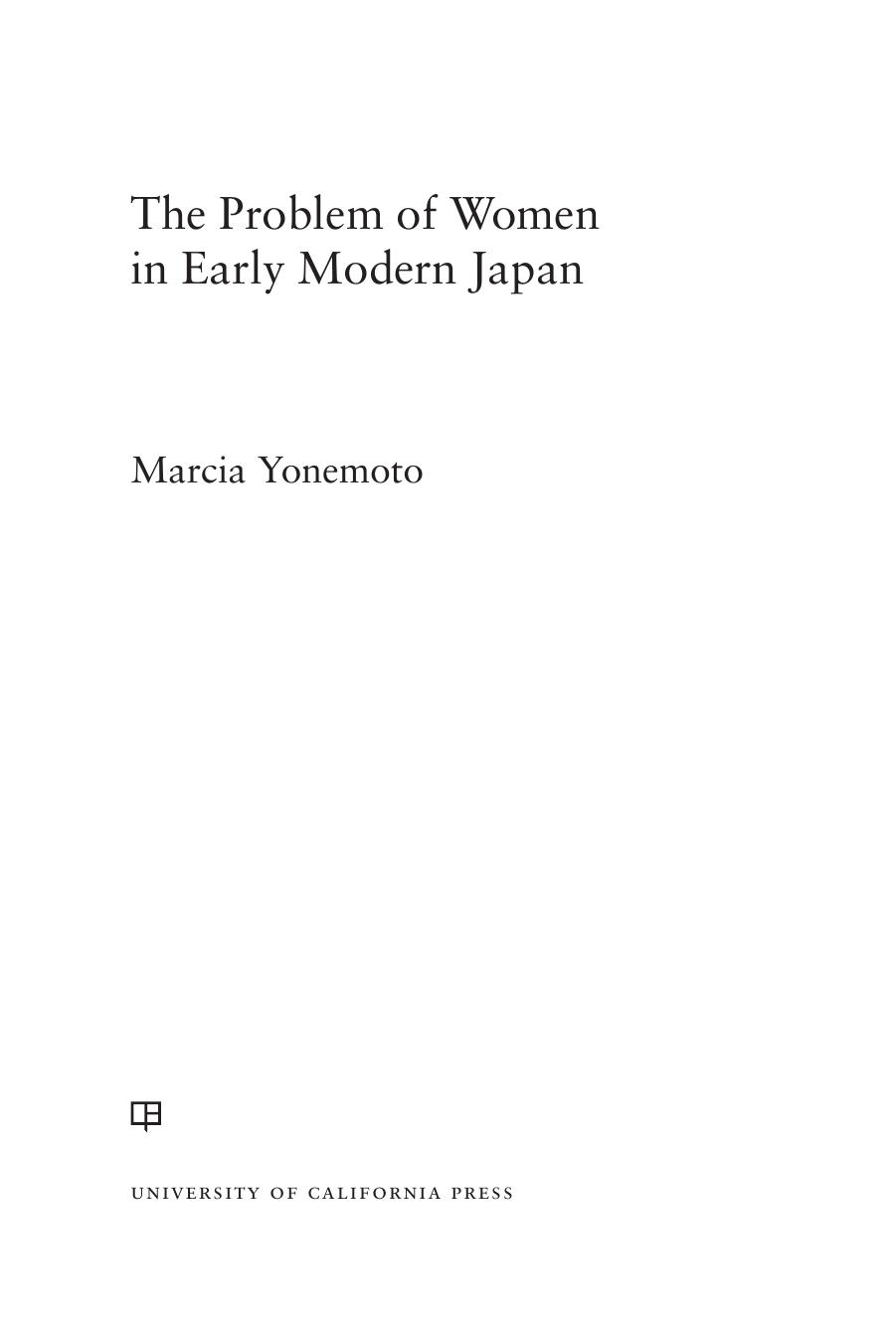The Problem of Women in Early Modern Japan by Marcia Yonemoto

Author:Marcia Yonemoto
Language: eng
Format: epub, pdf
ISBN: 9780520292000
Publisher: University of California Press
Social Motherhood in Drama and Fiction
While the figure of the mother remained curiously absent in didactic and instructional literature until the early nineteenth century, the balance between a mother’s nurturing love for her children, which was expected and encouraged, and her overindulgence of them, which was undesirable, provided the dramatic tension in popular drama and fiction from the early Tokugawa period. In “old jōruri” plays (ko jōruri), many of which had been performed since the late medieval period and continued to be produced into the early modern period, mothers are often depicted as emotionally driven but autonomous actors willing to oppose their husbands in order to protect the lives or well-being of their children.52 For example, in Horie no maki zōshi (Tales of Horie), a play first performed in the late medieval period, a mother not only openly opposes her husband’s plan to use their children as tools in a vendetta against a political enemy, but she ultimately kills herself in protest of his actions.53 In Oguri, a mother who possesses her own income from landed property (chigyōchi) uses her economic power to aid and protect her children.54
In popular illustrated tales (kanazōshi) written in the late seventeenth and early eighteenth century, the image of the mother shifts from one who exercises relatively autonomous power to one whose inherent weakness as a woman makes it impossible for her to protect her children, especially her sons; instead, all she can do is prepare them as best she can for the challenges they will face, and must endure, without her. This image of the mother is evident in such works as Osaka monogatari (Tales of Osaka).55 Set in the doomed Toyotomi camp after the Battle of Sekigahara in 1600, the mothers of Toyotomi Hideyori and Watanabe Kuranosuke lament their inability to see their sons through to their imminent deaths. As women who are by nature “ephemeral” or “shallow of heart,” they can only prepare them for the inevitable but not accompany them there, literally or spiritually.56 For the most part, mothers in these texts are shown to be fully imbricated in and therefore confined by the social and political systems in which they play important if somewhat understated parts.
In later Tokugawa-period puppet plays (ningyō jōruri), however, these two contrasting images of the mother—the able protector and the weak incompetent—come together in the dramatis personae of what Sakurai Yūki has called the “mother torn asunder.”57 In these hugely popular plays, many of which are still performed today, such as Sugawara Denju tenarai kagami (Sugawara and the Secrets of Calligraphy, 1746) and Yoshitsune senbonzakura (Yoshitsune and the Ten Thousand Cherry Trees, 1747), both written by the trio of playwrights Takeda Izumo, Namiki Sōsuke, and Miyoshi Shōraku, the familiar tension between obligation (giri) and human emotion (ninjō) is recast in gendered and familial terms, as fathers come to represent and to enforce on their family members the values of loyalty, rectitude, and socially and politically appropriate behavior, while mothers come to represent pure love and unqualified attachment to children.
Download
The Problem of Women in Early Modern Japan by Marcia Yonemoto.pdf
This site does not store any files on its server. We only index and link to content provided by other sites. Please contact the content providers to delete copyright contents if any and email us, we'll remove relevant links or contents immediately.
| Civilization & Culture | Expeditions & Discoveries |
| Jewish | Maritime History & Piracy |
| Religious | Slavery & Emancipation |
| Women in History |
Cecilia; Or, Memoirs of an Heiress — Volume 1 by Fanny Burney(32436)
Cecilia; Or, Memoirs of an Heiress — Volume 2 by Fanny Burney(31872)
Cecilia; Or, Memoirs of an Heiress — Volume 3 by Fanny Burney(31857)
The Secret History by Donna Tartt(18851)
Sapiens: A Brief History of Humankind by Yuval Noah Harari(14254)
Leonardo da Vinci by Walter Isaacson(13188)
The Radium Girls by Kate Moore(11922)
Sapiens by Yuval Noah Harari(5294)
How Democracies Die by Steven Levitsky & Daniel Ziblatt(5129)
The Wind in My Hair by Masih Alinejad(5034)
Homo Deus: A Brief History of Tomorrow by Yuval Noah Harari(4827)
Endurance: Shackleton's Incredible Voyage by Alfred Lansing(4677)
The Silk Roads by Peter Frankopan(4458)
Man's Search for Meaning by Viktor Frankl(4426)
Millionaire: The Philanderer, Gambler, and Duelist Who Invented Modern Finance by Janet Gleeson(4379)
The Rape of Nanking by Iris Chang(4139)
Joan of Arc by Mary Gordon(4016)
The Motorcycle Diaries by Ernesto Che Guevara(4015)
Hitler in Los Angeles by Steven J. Ross(3901)
